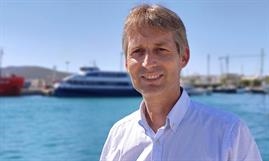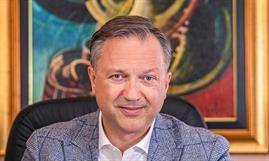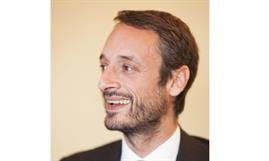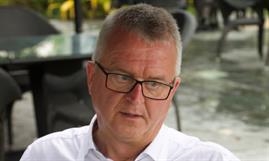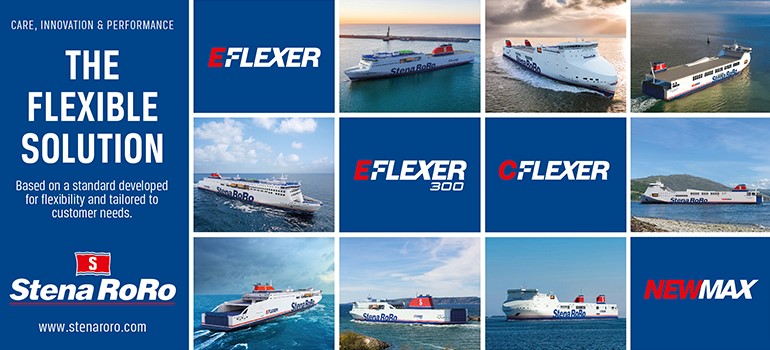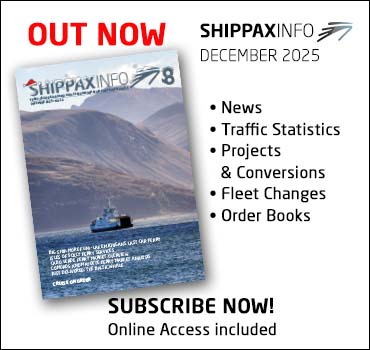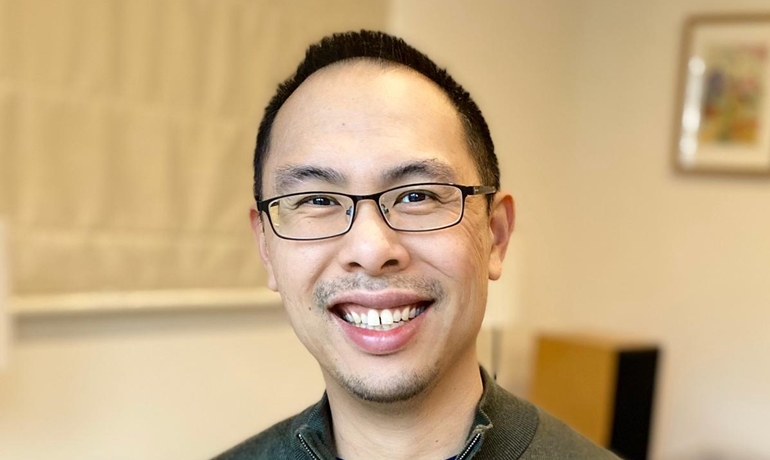
Edwin Pang
Quick Q&As - Edwin Pang
InterviewThis interview with Edwin Pang was first published in the March 2020 issue of our monthly magazine Shippax Info.
Name: Edwin Pang
Position: Depends on the hat, but mostly problem solver
Age: 43
Zodiac sign: Scorpio
Civil status and family: Married with three children
Place of birth: Singapore
You live and breathe shipping in general and ferries in particular. What got you hooked on shipping and what influenced your decision to study naval architecture?
I grew up in Singapore surrounded by ships and I was out at sea a lot as a kid because my dad and his brothers were avid hobby fishermen. It never occurred to me though that it might be something I could pursue as a career until I was idly browsing some university prospectuses in the college library instead of revising for A levels and spotted an undergraduate course in naval architecture in the UK.
Could you briefly tell us something about your career path so far in naval architecture?
I started off at Three Quays Marine Services in London in 2000 while it was still a part of the P&O
Group and did a lot of safety-related work on ferries and cruise ships including an EU research project on alternative design for fire safety, as well as evacuation and LSA (MES and fast rescue boats). I became involved in stability and damage stability towards the end of my time there. I joined Knud E. Hansen in 2005, moving to Copenhagen where I lived for about a year, before returning to the UK to help start up the London office. During this period, we did a lot of ship design work and I specialised in damage stability, representing Denmark at the IMO on damage stability issues for about seven years. Highlight was probably being onsite at Lloyd Werft for the lengthening of STENA BRITANNICA and being responsible for the floating calculations of the aft end before we pulled her apart. I moved on to Herbert Engineering Corp. at the start of 2016 in a technical business development role where I began to get involved with environmental issues – particularly EEDI, and started assisting Interferry.
You wear several hats at the same time: besides being Leadship’s representative in the UK, you run your own consultancy business which focuses on advising the industry on major IMO initiatives, you assist Interferry on a number of different issues, and you chair the IMO committee of the Royal Institution of Naval Architects (RINA), amongst others. Could you elaborate on the different responsibilities you shoulder?
I am the permanent representative of the Royal Institution of Naval Architects to the IMO, and chair a committee of about 30 naval architects from a wide variety of backgrounds and seniority and am responsible for all of the Institution’s engagement at the IMO. It is an unpaid role on which I spend about 50 days a year attending IMO sessions, writing and evaluating submissions and cooperating with flag states and NGOs. In this role I also keep an eye out for the ferry industry and support Interferry on IMO- and regulatory-related matters. These sometimes spinoff into work such as the EC’s project to revise the Stockholm Agreement or Interferry’s re-examination of EEDI for the sector. The consulting business grew out of these roles, helping to feed ship design experience back into the regulatory loop and into research projects.
With Leadship, it’s more an advisory and business development role, though I still help out on the technical side when time permits.
What is high on the Interferry agenda at present?
Depends on who you ask, but I think the main ones are fires on ro-ro decks, the FerrySafe domestic ferry initiative, and the GHG issue.
The IMO requires the global shipping industry to reduce its GHG emissions by 40% by 2030 and 50% by 2050. Are these targets realistic for the ferry sector? As 2008 is the reference year, some people say that shipping will have to be carbon-neutral by 2050. Is this achievable?
Those levels of ambition are from the initial strategy, the final one may be more ambitious, and in any case the EU are making noises about using 2018 as a reference year. The 2030 target depends on a set of regulatory measures for all existing ships that will be discussed at IMO in March. Interferry and myself are working hard on trying to figure out if these measures are workable and what the impact might be across the entire fleet. The third point is that whether the targets are achievable or realistic really depends on how we end up measuring progress as well as port infrastructure and availability of alternative fuels.
What is your advice to our readers on regulatory matters?
Get involved and contribute rather than wait for it to be imposed.
How would you describe yourself in five words?
Singaporean in a European industry.
What do you love about your job?
It’s always fascinating and I am always learning something new.
What are your favourite pastime activities?
Spending time with the family, searching out good food.
What music do you like?
Mostly classical, from Bach through to Shostakovich.
What is your favourite dinner and drink combination?
Singapore’s national dish, chicken rice. Medium rare ribeye and a rioja comes close though.
mar 01 2020
Most read
Incat Tasmania and Molslinjen sign contract for third battery-electric high-speed catamaran
dec 05 2025


